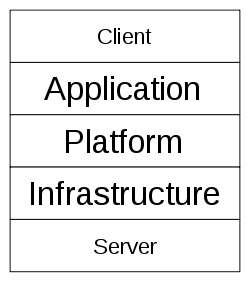
Cloud computing provides computation, software, data access, and storage services that do not require end-user knowledge of the physical location and configuration of the system that delivers the services. Parallels to this concept can be drawn with the electricity grid, wherein end-users consume power without needing to understand the component devices or infrastructure required to provide the service.
The concept of cloud computing fills a perpetual need of IT: a way to increase capacity or add capabilities on the fly without investing in new infrastructure, training new personnel, or licensing new software. Cloud computing encompasses any subscription-based or pay-per-use service that, in real time over the Internet, extends IT's existing capabilities.[citation needed]
Cloud computing describes a new supplement, consumption, and delivery model for IT services based on Internet protocols, and it typically involves provisioning of dynamically scalable and often virtualized resources It is a byproduct and consequence of the ease-of-access to remote computing sites provided by the Internet. This may take the form of web-based tools or applications that users can access and use through a web browser as if they were programs installed locally on their own computers.
Cloud computing providers deliver applications via the internet, which are accessed from a web browser, while the business softwareand data are stored on servers at a remote location. In some cases, legacy applications (line of business applications that until now have been prevalent in thin client Windows computing) are delivered via a screen-sharing technology, while the computing resources are consolidated at a remote data center location; in other cases, entire business applications have been coded using web-based technologies such as AJAX.
Most cloud computing infrastructures consist of services delivered through shared data-centers and appearing as a single point of access for consumers' computing needs. Commercial offerings may be required to meet service-level agreements (SLAs), but specific terms are less often negotiated by smaller companies.
Layers
Once an internet protocol connection is established among several computers, it is possible to share services within any one of the following layers.
Client
A cloud client consists of computer hardware and/or computer software that relies on cloud computing for application delivery and that is in essence useless without it. Examples include some computers, phones and other devices, operating systems, andbrowsers.
Application
Cloud application services or "Software as a Service (SaaS)" deliver software as a service over the Internet, eliminating the need to install and run the application on the customer's own computers and simplifying maintenance and support.
Cloud infrastructure services, also known as "infrastructure as a service" (IaaS), deliver computer infrastructure – typically a platform virtualization environment – as a service, along with raw (block) storage and networking. Rather than purchasing servers, software, data-center space or network equipment, clients instead buy those resources as a fully outsourced service. Suppliers typically bill such services on a utility computing basis; the amount of resources consumed (and therefore the cost) will typically reflect the level of activity.
Server
The servers layer consists of computer hardware and/or computer software products that are specifically designed for the delivery of cloud services, including multi-core processors, cloud-specific operating systems and combined offerings.



